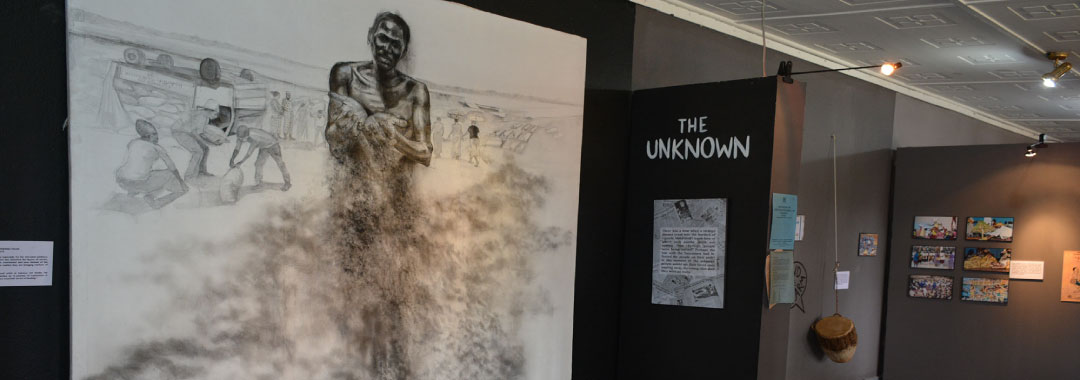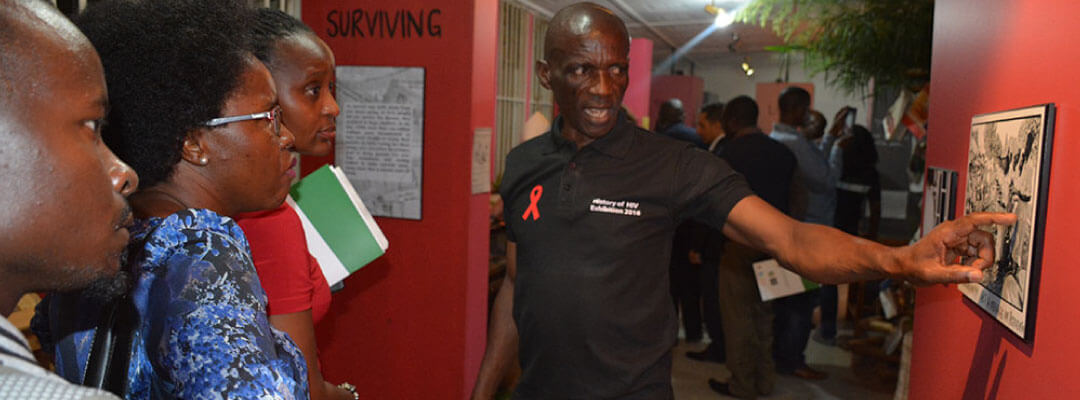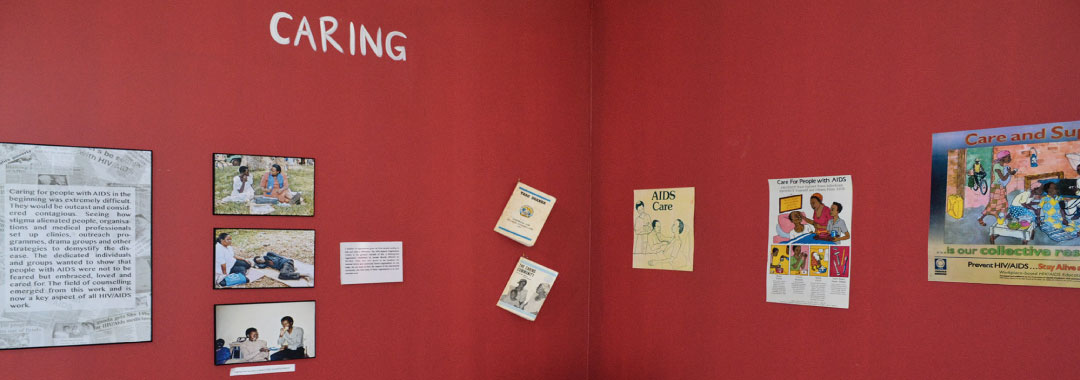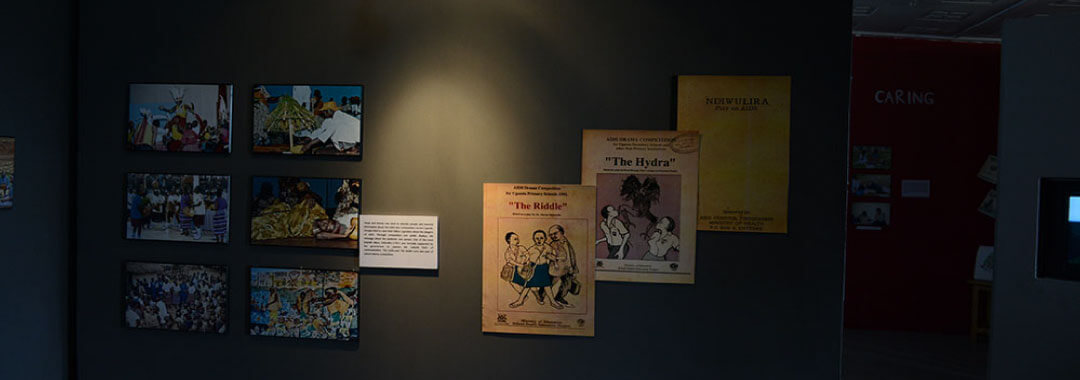
A History of HIV/AIDS Exhibition in Uganda project
Background
The History of HIV Exhibition is a project implemented by a consortium consisting of The Ugandan Academy for Health Innovation and Impact based at Infectious Diseases Institute, The AIDS Support Organisation and Uganda AIDS Commission. The Uganda Museum offered to host the exhibition in Kampala. The lead team was the Ugandan Academy for Health Innovation and Impact based at the Infectious Diseases Institute (IDI), Kampala. The exhibition showcased IEC materials from different organisations spanning from the last 30 years on the HIV/AIDS response in Uganda. The materials include photographs, videos, newspaper articles, and loaned artworks. Stakeholders including Ministry of Health, NGOs, health care workers, people living with HIV (PLHIV) were consulted on exhibition content and structure prior to a small pilot. Curation was undertaken in a participatory manner in order to make the exhibition as accessible as possible and to highlight that the urgency of these messages has not diminished.

Overall objective
To establish an exhibition to document the history of HIV in Uganda through archived materials.
Specific objectives
- To create digital archive and showcase selected historical IEC materials used from 1988 to present day of the HIV epidemic in Uganda.
- To create an artwork including photos of people who lost loved ones to HIV and the names of those lost.
- To use an exhibition of the history of HIV to interact with stakeholders around the positive progress made in HIV control in Uganda in an innovative way.
- To use an HIV/AIDS exhibition as a trigger for HIV prevention discussions around behavior change, especially among young people and KP/PP and to encourage HIV testing in people who have not recently or ever tested.
- To monitor and evaluate whether exposure to an HIV/AIDS exhibition leads to change in attitudes and high risk behaviors, and to increased uptake of HIV testing in those never tested/not recently tested.
- To gather information about which older HIV materials have the most impact and can be used for communicating HIV messages in contemporary times.

Brief progress of the exhibition
The exhibition was officially launched on 28th November 2018 by the Embassy of Ireland and opened to the general public on 1st December, 2018. It set out to reach at least 500 people from 1st December to 31st December, 2018. However, the exhibition generated significant interest from different spheres and in order to ensure that the exhibition was experienced by a wider range of people, the Embassy of Ireland granted an extension for a period of one month (from 1st January to 31st January 2019). The Uganda Museum offered an in kind contribution of the temporary exhibition space for the period of one month (January, 2019).
In a period of two months, the exhibition hosted a total of 2,202 people. The exhibition visitors include secondary school students, University students, out of school youths, most at Risk Populations (including sex workers, boda boda riders), senior health officials, leaders of NGO’s, local and international media houses among others. The research team is in early stages of conducting the analysis of the data collected from the exhibition to determine the impact on the population that visited the exhibition.
Next step
- Additional Information for Wellcome Trust Public Engagement Award Application. March 2019
4 HIV Exhibition Catalogue and Timeline
5 Project report of History of HIV exhibition
6 Video of Infected or Affected Exhibition

